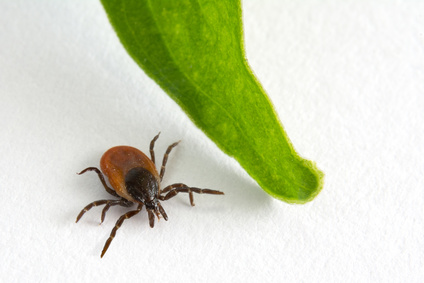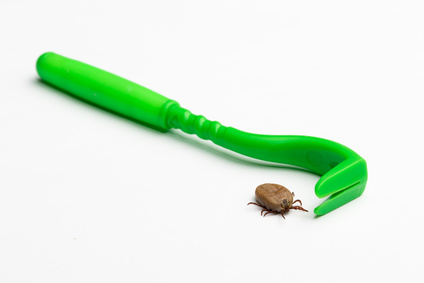
Lyme disease, or borreliosis

Maybe you know Lyme disease in humans ?
This disease, tick-borne, causes joint pain and muscle, fever, skin symptoms and many other disorders. It is part of emerging diseases : We count 27000 new human cases each year in France.
Yet, this disease can easily go undetected : the incubation period is long and the first symptoms in humans may appear very late.
Lyme disease affects not only humans but also many other animal species, especially the dog.
Let's see how the disease manifests itself in him and what are the ways to avoid it…
The causes of the disease
Lyme disease is transmitted to the dog during a tick bite.

Only ticks of the genus Ixodes Ricinus can transmit the disease.
It is estimated that 30% of these ticks are infected by bacteria : Borrelia burgdorferi. An infected tick will, by pricking the animal, inoculate him this bacteria during a blood meal through saliva. Once the bacterium is present in the blood of the animal, it is spread in his body and then can cause the onset of symptoms.
The disease is present throughout France, but wooded areas are particularly at risk. Ticks are active from May to October with two periods of maximum activity in the spring and fall.
What symptoms ?
Often dogs infected with Borrelia burgdorferi bacteria never show symptoms : they are called "asymptomatic" or "healthy carriers".
For those who say the disease one day, the incubation period (period between infection and the onset of symptoms) is long : it lasts several months.
The most common symptom in dogs is the presence of lameness associated with pain in one or more joints. This lameness may be accompanied by fever and an allowance. In some cases, the dog can vomit.
When Lyme disease takes a chronic form, it can lead to very different symptoms : fatigue, diffuse pain, neurological disorders, Cardiac disorders, kidney problems ...

A difficult diagnosis to establish ...
Just as in humans, the diagnosis of Lyme disease in dogs is difficult to establish. Lyme disease is suspected is issued by the veterinarian depending on the symptoms presented by the animal and its lifestyle. To confirm the diagnosis, the use of additional tests is essential, including blood analyzes to search the pathogen or the presence of antibodies against Borrelia burgdorferi. A urinalysis and / or joint aspiration may also be needed.

The treatment
The treatment is long : the dog will have to take antibiotics for a month. Your veterinarian will monitor your dog for the duration of treatment and it is possible that other complementary examinations are carried out at the end of treatment. Depending on the stage of the disease and symptoms that this animal, other treatments can be implemented.
Can we prevent disease ?
Various preventive methods to avoid this disease.
The first is the use of external parasiticides
They help protect your dog against ticks.
There are many forms : swallowable tablets, pipette to deposit on the skin, necklaces, sprays…
Ask your veterinarian for advice. He will give you the most suitable treatment for your dog (according to race, about his age, its environment and its way of life).
Is the second vaccination
A vaccine exists and is particularly recommended for all high risk dogs such as hunting dogs eg. The first vaccine injection occurs soon 12 weeks of age. A callback is made 3 to 5 weeks after, then each year.
The third scrutiny
Finally it is advisable to make a careful examination of your dog after each walk. You will be able to withdraw, using a hook breast tick, ticks that could be attached to it and thus prevent them from achieving their blood meal.

My dog can he send me the disease ?
Non, the dog can not directly transmit the disease to humans. Man must always be bitten by an infected tick to be contaminated.
§
Lyme disease is present in animals. It is common in dogs, horses, but also in animals wildlife (cervids, rodents ...). It exists in cats but is much more rare in this species.
For your dog, as for you, it is very necessary to protect themselves from ticks during your campaign trips (in humans, it is advisable to wear long clothing). On the return walk a careful examination of the dog and the master is advised to remove ticks as soon as possible !

If you have difficulty removing the tick on your dog, do not hesitate to contact your vet who will remove them one by one and advise suitable pesticides !
Author : Dr. Magali Pernot. Illustrator : Dr. Caroline Allard – Vetup®
